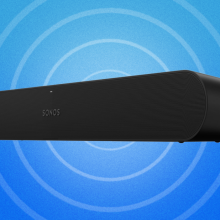For what feels like at least a decade, online gaming spaces have overflowed with takes about how boring and repetitive open-world games have become. I never agreed, personally; I have the kind of brain that finds great joy in scrambling from one map icon to the next, filling meters and making numbers go up along the way.
Then I played Rise of the Ronin.
The latest title from the action game gurus at Team Ninja should be great. It’s got all the ingredients! Whether it’s the skillful, satisfying combat, the occasionally gorgeous recreation of 1860s Japan, or the powerful idea of getting into shenanigans and making story-altering choices with real historical figures, Rise of the Ronin has it all.
Instead, what should be Team Ninja’s biggest triumph was, for me, one of its biggest letdowns. There’s plenty to like about Rise of the Ronin, especially in the opening hours, but whatever novelty exists at the start eventually gives way to the worst kind of open-world gruel.
What I liked about Rise of the Ronin
Warning: This section contains minor spoilers for the early parts of Rise of the Ronin’s story.
Hey, I know that guy!

I really mean it when I say the first act of Rise of the Ronin had me super stoked to play more because it’s goofy as hell.
Set in various parts of Japan during that country’s particularly tumultuous 1860s, Ronin starts with a bang by having the player create not one, but two protagonists. These "Blade Twins" as they’re called were brought together during childhood by tragedy before becoming experts in the ways of the blade.
Naturally, you choose to play the rest of the game as one of them, while the other becomes a recurring antagonist. It’s pretty cool to put time into a detailed character creator and then be told that one of your creations is now someone that you’ll want to beat up for the next few dozen hours. Love that.
Aside from that, Ronin follows the Assassin’s Creed path pretty closely. You’ll spend most of the game hobnobbing with fictionalized versions of real historical figures, all of whom have been reimagined as badass swordsmen for the sake of boss fights. One of the first events is a boss fight against Matthew Perry, a real U.S. naval officer who played a key role in opening relations between America and Japan.

I don’t know if Perry ever used a sword in combat in real life, but the guy’s got some moves in Rise of the Ronin. I don’t know if I’d call this game’s treatment of history respectful or not, but it is at least funny.
The rest of the narrative, outside of the occasional cameo by someone you either recognize from history class or Google, is unremarkable. It’s all an excuse to get you from one place to the next. It occasionally hints at being more interesting than it actually is by forcing you to make major choices, but aside from sometimes locking you out of side quests, these never felt that meaningful to me.
I’ll put it this way: It’s a little weird for me to take a decidedly anti-shogunate position during a major story mission, only to turn around and be all buddy-buddy with the literal shogun in a side quest 20 minutes later. There’s also at least one instance where you can make a choice that extremely diverges from history, only for the game to gin up a reason for that to not matter very much right afterward.
The bayonet is so cool
Thankfully, like Team Ninja’s other efforts (Nioh, Ninja Gaiden, Stranger of Paradise), Rise of the Ronin is much more about fighting dudes than watching cutscenes.
The parts where you fight dudes are absolutely the peak of what Ronin has to offer. It’s a little simpler on the surface than something like Nioh or Stranger of Paradise in that you only have one basic attack button and no magic abilities. However, there are a boatload of different weapon types to choose from, and each type has at least three (and often more) upgradeable styles to utilize in combat.
Personally, I favored a rifle with a bayonet attached to it. You can do sick melee combos that end with you shooting some goober samurai in the face from point-blank range. It feels great.
The importance of styles can’t be understated. A little on-screen icon will helpfully let you know if the style you currently have equipped is strong, weak, or neutral against whatever your enemy is using, so fights typically involve switching between weapon styles (or weapons entirely) to fit the situation. Choose the right stance and your foe will go down a lot more quickly than he would have otherwise.

Of course, it’s not as simple as just rock-paper-scissorsing your way through fights with the right styles. There’s a real element of skill here because of your other major ability, the Counterspark. This is a counter move that is a skeleton key for the rest of the combat system, in that it can stagger enemies and refill your stamina meter, which drains with every attack.
The timing on pulling off a successful counter is just stringent enough to feel rewarding without being too punishing. Successfully counter several strikes in a row, and the enemy will be stunned long enough for you to perform a sick finishing move. As a loop, it feels fantastic.
That said...I did feel that eventually fights became predictable and rote. There’s very little diversity in tactics from one boss fight to the next. Your objective is always to just memorize attack patterns and counter accordingly until the boss is stunned. It’s really fun five hours in, but a lot less interesting 30 hours in.
What I disliked about Rise of the Ronin
It beat my ability to care out of me
Alright, fun’s over. Let’s get to the stuff about Rise of the Ronin that caused me to give up mere hours before the game’s final mission because I just didn’t care anymore.
The truth is that when you’re not actively engaging in sword duels, Rise of the Ronin is dreadfully boring. Its open world is sizable enough and full of icons to clear out from the map, but almost none of them provide any juice. It’s kinda cool that one of the collectibles is just cats that you can pet, but that’s it.

Almost every side quest involves going to a place and killing dudes. Sometimes you have to use a way-too-technologically-advanced camera to take photos instead. You technically have the option of using stealth in most encounters, but this isn’t any different from any other modern open-world game — aside from the part where the enemy AI is too stupid to see you assassinate one of their friends from ten feet away.
Open-world activities give almost nothing in the way of narrative heft. The zones don’t even feel particularly cleverly designed, which was what allowed me to enjoy a similar design structure in Final Fantasy VII Rebirth. There aren’t really unique environmental hazards or mechanics from one area to the next.
It’s just a game about running between icons until a meter fills up and you get some rewards. For the first ten hours, I loved it. For the next ten hours, I liked it but could feel it becoming tedious. And then for ten hours after that, I wanted to play anything else instead. What starts as an exciting samurai adventure devolves into monotonous sludge well before it’s over.
Too much god damn loot
Speaking of rewards, Rise of the Ronin doesn’t have a great sense for what should make them feel worthwhile. Similar to the studio’s recent work in Nioh, there’s just way too much loot in this game. Each area has several optional treasure chests to find, but these quickly become meaningless because each one has like 18 swords in it that don’t do anything aside from provide a slightly higher damage number than the one you already have equipped.
This extends to the gear system, which does at least let you dress your character up however you want. However novel it is to find a U.S. Navy uniform in a chest at the beginning of the game, though, pales in comparison to how dull it is to find a 50th, slightly more powerful version of the same thing 20 hours later.
At a certain point, getting loot in Rise of the Ronin feels like having chocolate cake for every meal. The good brain chemicals stop firing after a while and you’d rather play a game with no loot in it instead.
Here’s another way of looking at it: Your in-game inventory has a very generous 2,000 open slots, and my inventory still filled up like halfway through the story.
Sometimes it’s pretty, other times it’s not
My final criticism of Rise of the Ronin is a lot less significant than the others, but it needs to be said that this is a big-name PS5 exclusive that doesn’t always look the part.
Sometimes, you crest a hill and see an idyllic flower field on the horizon that the sunlight is hitting in just the right way and it’s gorgeous. But then the camera zooms in for a cutscene and you see that the character models aren’t anywhere near as expressive as some other recent AAA games.
It's overall an inconsistent visual presentation, which is part and parcel with the performance on PS5. I played in the mode that promises a higher frame rate and there were plenty of noticeable dips at seemingly random times. Rise of the Ronin isn’t ugly by any means, but it’s not a system showcase for the PS5, either.
Final thoughts
It doesn’t bring me any particular joy to tear into Rise of the Ronin like this. Team Ninja is a venerable studio responsible for some of the greatest action games ever made. That kind of pedigree should absolutely translate to an open-world masterpiece, but it just doesn’t in this case.
Maybe the Team Ninja-heads in my life will love it anyway. There’s certainly lots of tinkering you can do with various weapons and styles and builds and whatnot. Rise of the Ronin isn’t lacking in depth or back-of-the-box features that sound exciting, but in practice, it never really came together into what I wanted it to be.
For more Mashable game reviews, check out our OpenCritic page.
Topics PlayStation


















